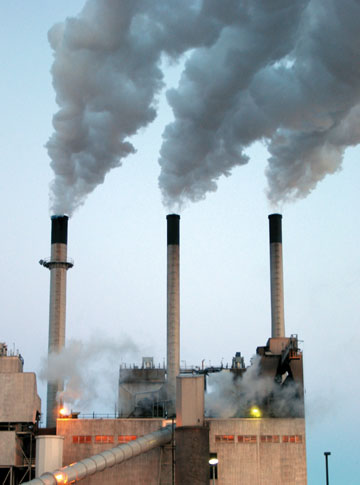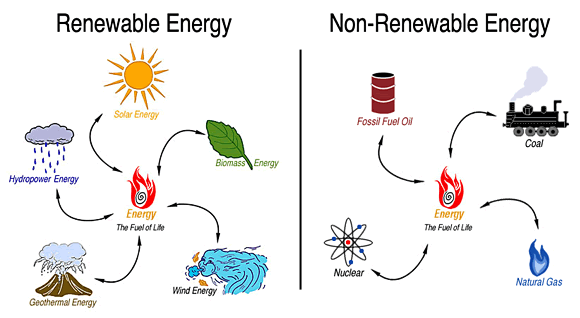


a.) There are many renewable energy, such as biomass, wind, solar, hydropower, and geothermal heat. All of the aforementioned energy sources can be used to power many things. Some examples are, solar energy is used to create electricity for homes, hydro power is used is dams to create electricity, and wind is used to create electricity to power environmentally concscious cities such as holland michigan(1). Non-renewable energy is energy, taken from "finite resources that will eventually dwindle, such as fossil fuels(coal, petroleum, and natural gas), nuclear energy, and propane gas(1). Examples of use are, coal is burn to produce electricity, petroleum is refined to make gas which powers vehicles, natural gas is used to heat houses, ect(2). Renewable energy produces little, if any greenhouse gasses which makes them extremely environmentally friendly. Nonrenewable resourses unspeakable amounts of green house gasses, which do harm to the environment. As far as cost goes the initial cost is quite steep to buy things such a solar panels, and wind turbines but money is saved in the long run. The cost of fossil fuels are cheap but there are there many negative effects with continued use.
b.) Air pollution effects the atmosphere by causing smog and acid rain(3). The effect of air pollution on the biosphere is that inhaling pollutants can harm humans and animals and kills plants. Air pollutions effect on the hydrosphere is that it pollutes water and air pollution causes global warming which melts polar ice caps. Air pollutions effect on the lithosphere is that after a long period of pollution in an area, the plants with die and the area will turn into solid rock.
c.) "Coal is a readily combustible black or brownish-black sedimentary rock normally occurring in rock strata in layers or veins called coal beds"(3). Coal is mined from the coal beds using heavy machinery and explosives. Coal is either packaged in bags to be used as charcoal or transported by train car to its destination. Coal is disposed of by burning it, which is usually to produce electricity. When coal is burned is releases greenhouse gasses into the air. It also creates acid rain, contaminates water, and produces ash(3).
1.)http://www.enviroliteracy.org/subcategory.php/32.html, Renewable Energy, Environmental Literacy Council, (November 24, 2009)
2.)http://www.cotf.edu/ete/ESS/ESSmain.html, Earth system science, Wheeling Jesuit University, (November 24, 2009)
3.)http://en.wikipedia.org/wiki/Coal, Coal, Wikipedia.com, (November 24, 2009)
http://www.inhabitat.com/2009/06/01/pvt-solar-panels-generate-heat-and-electricity-at-the-same-time/


